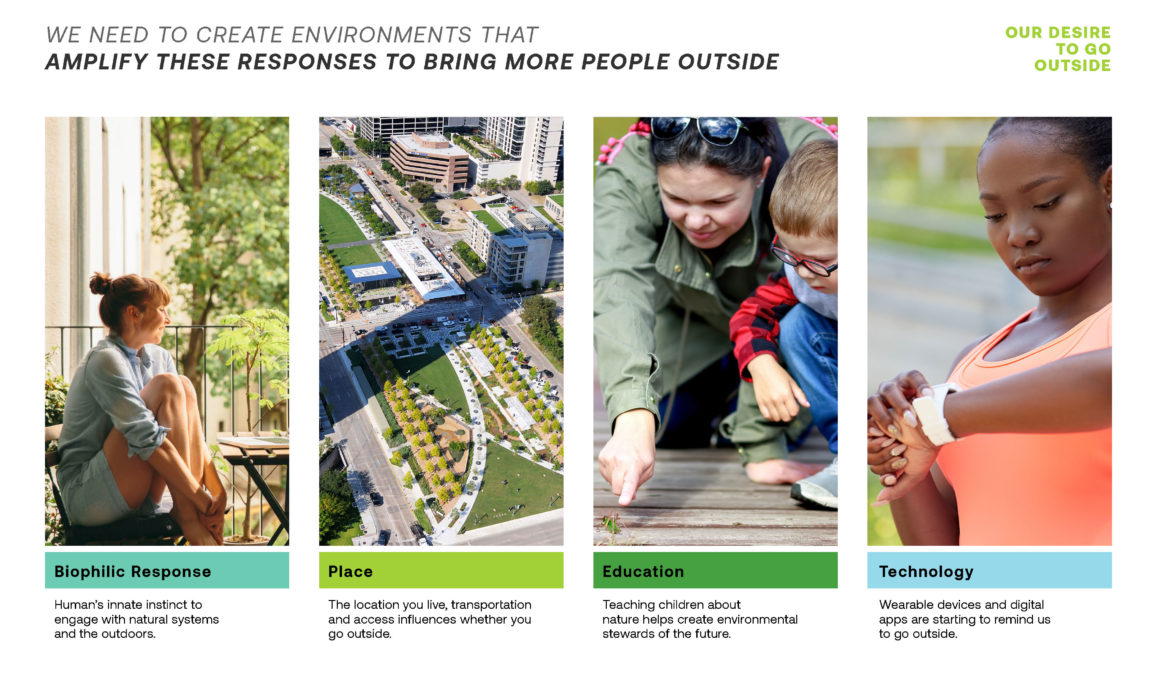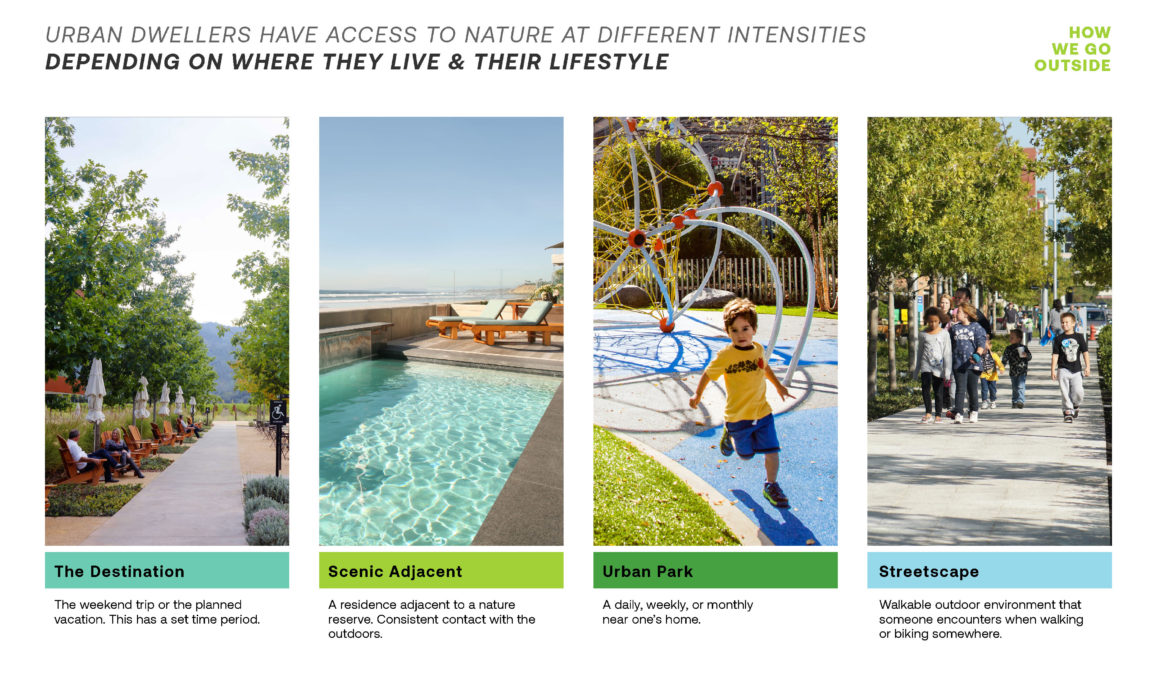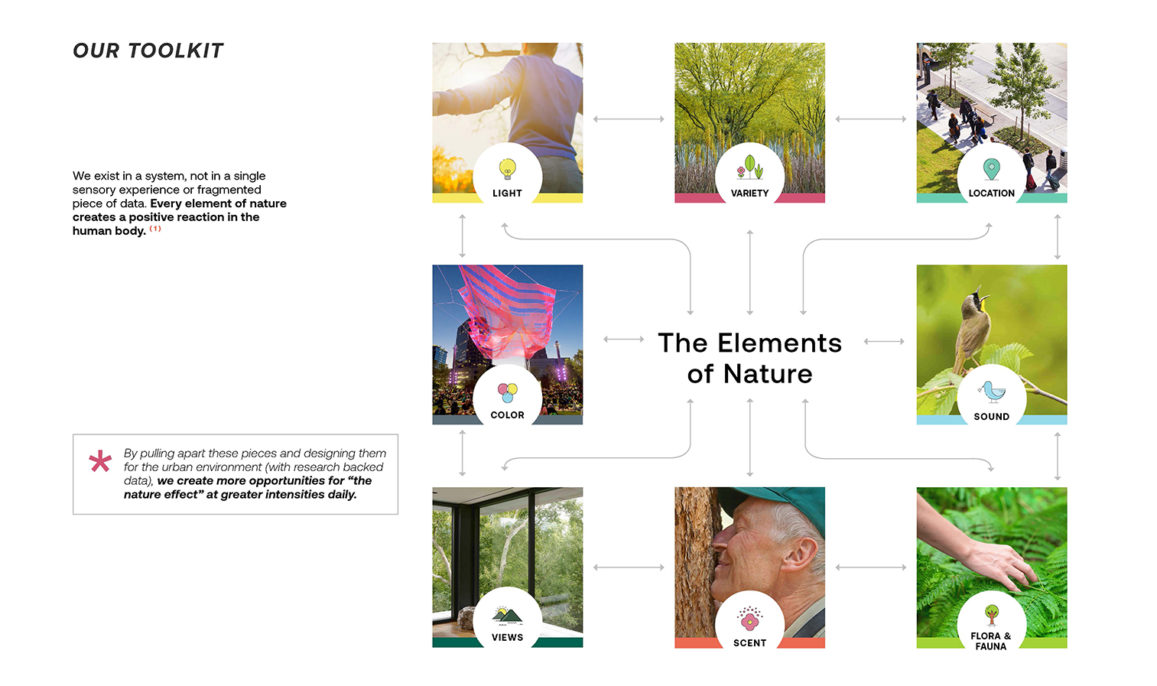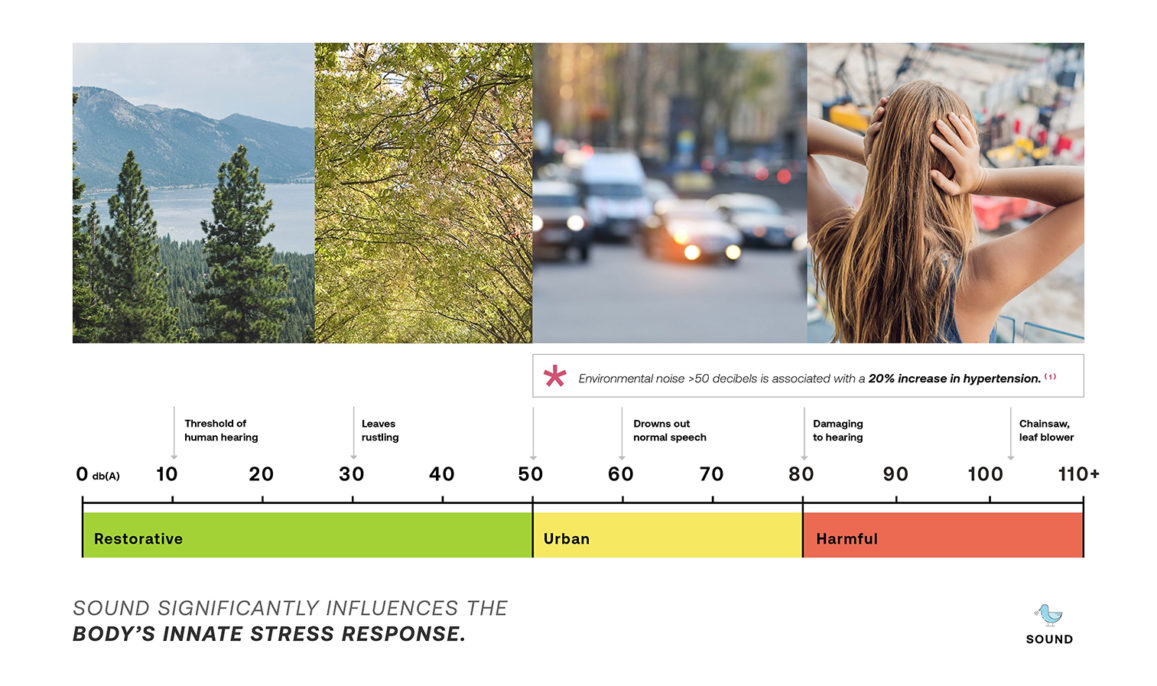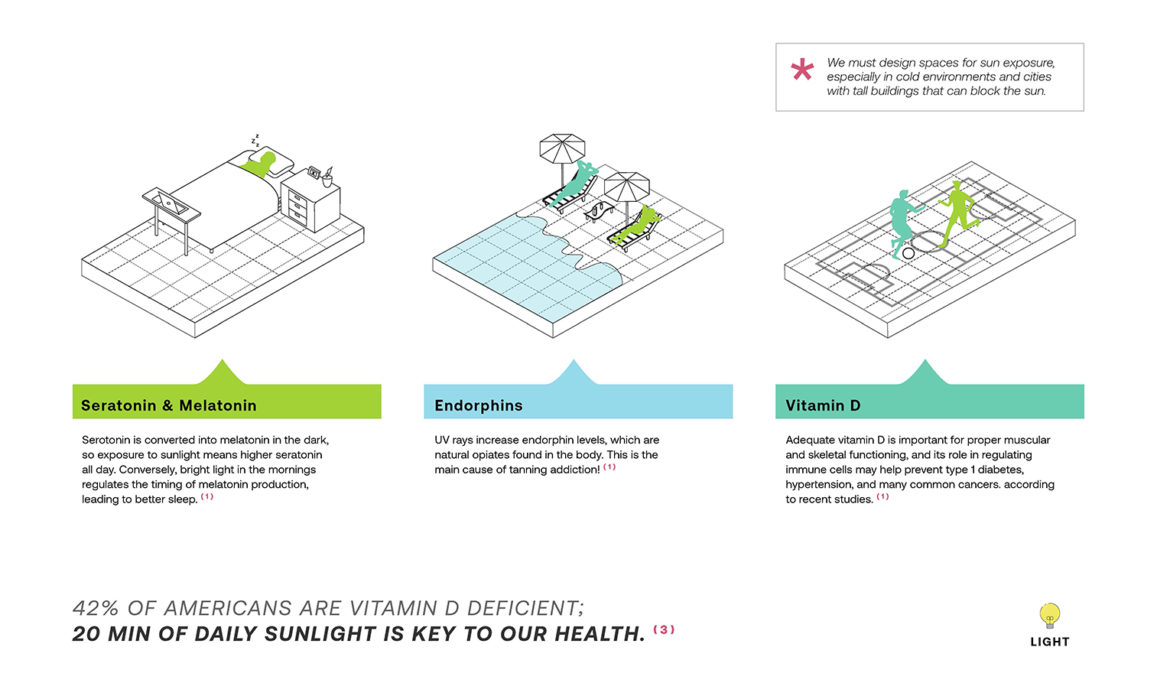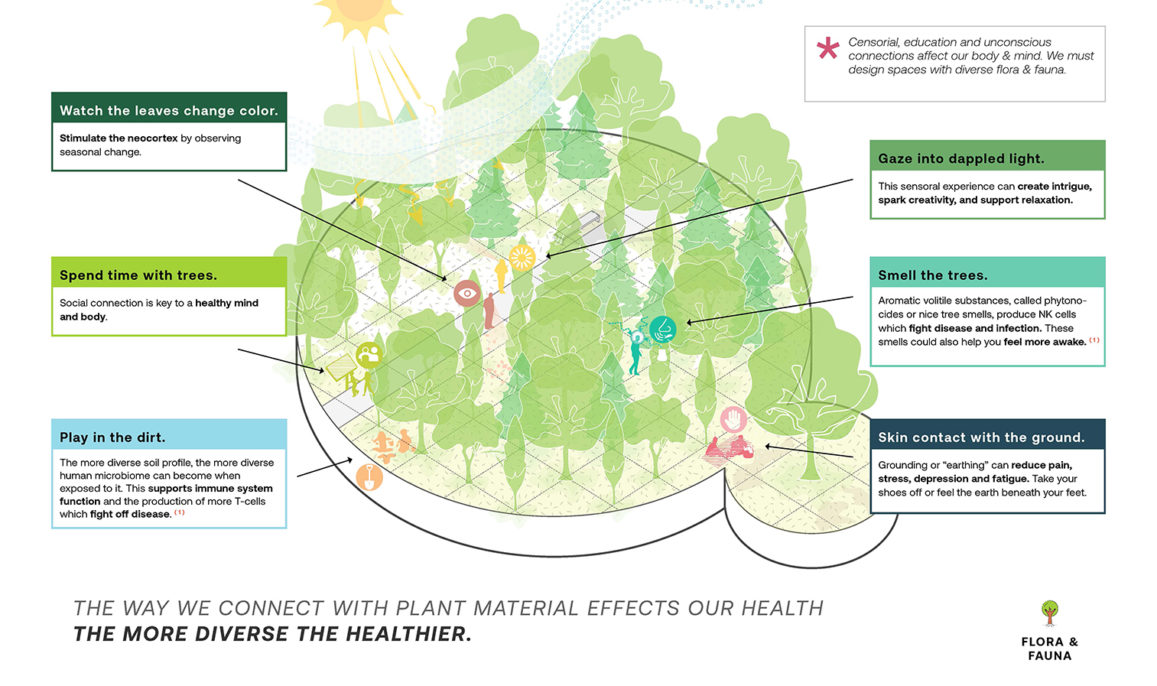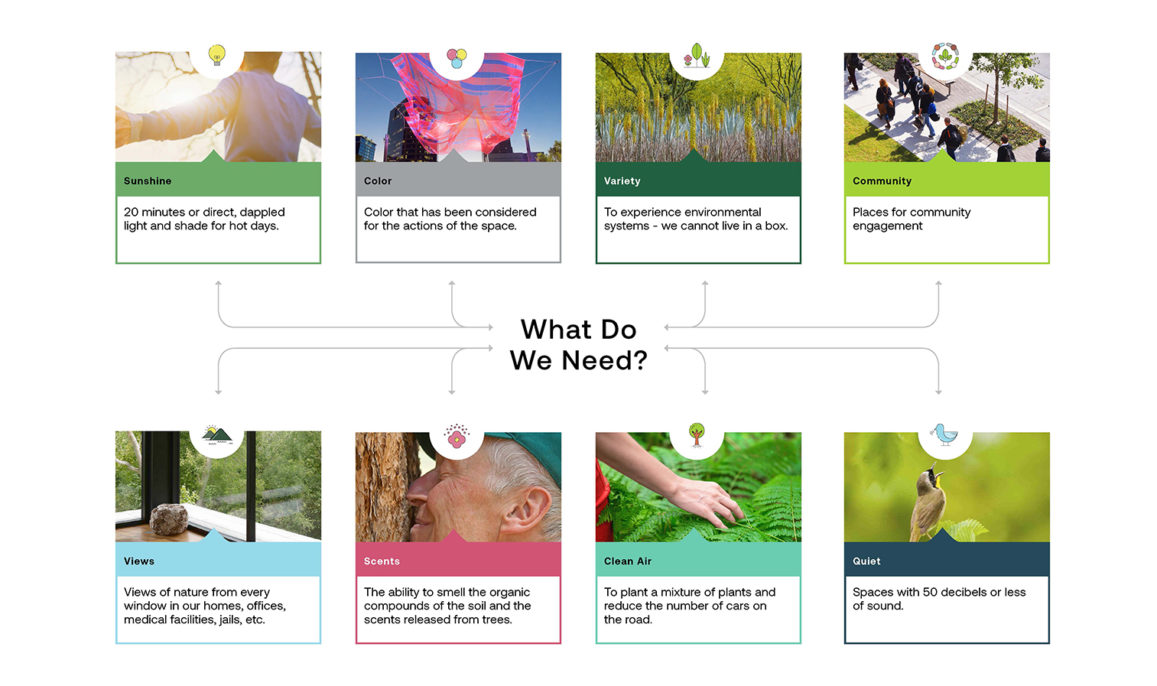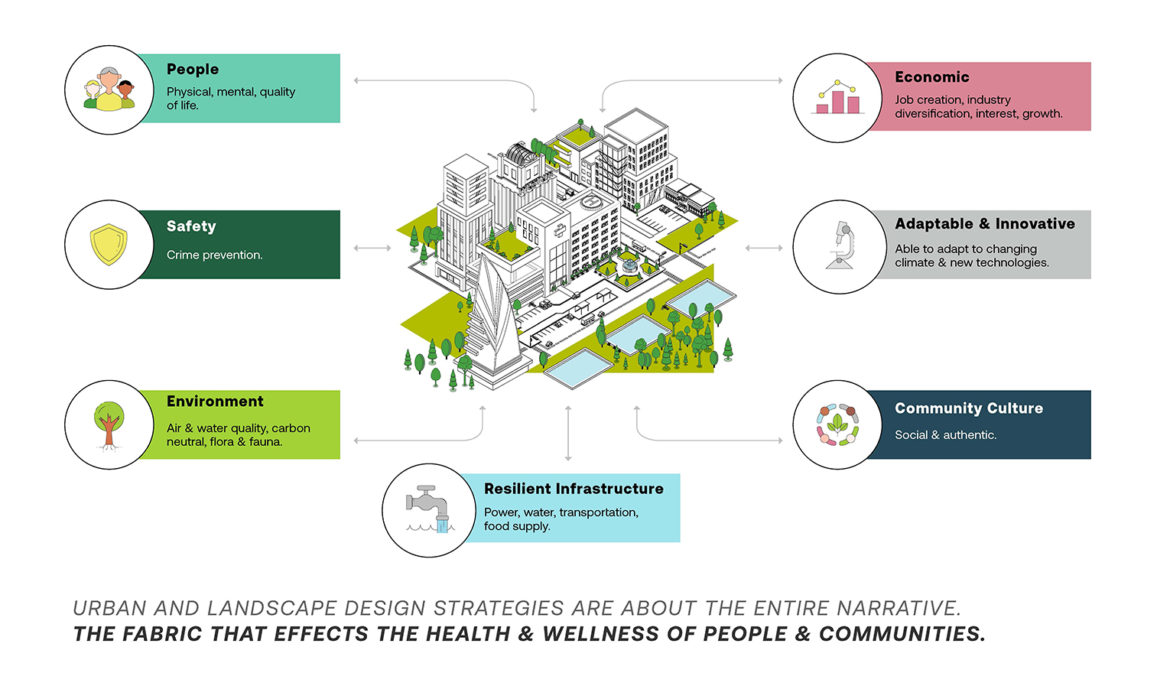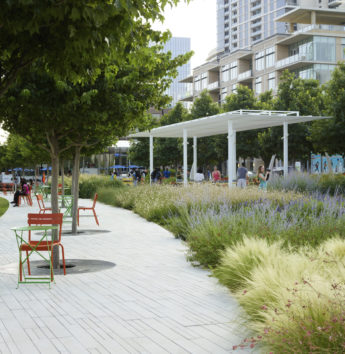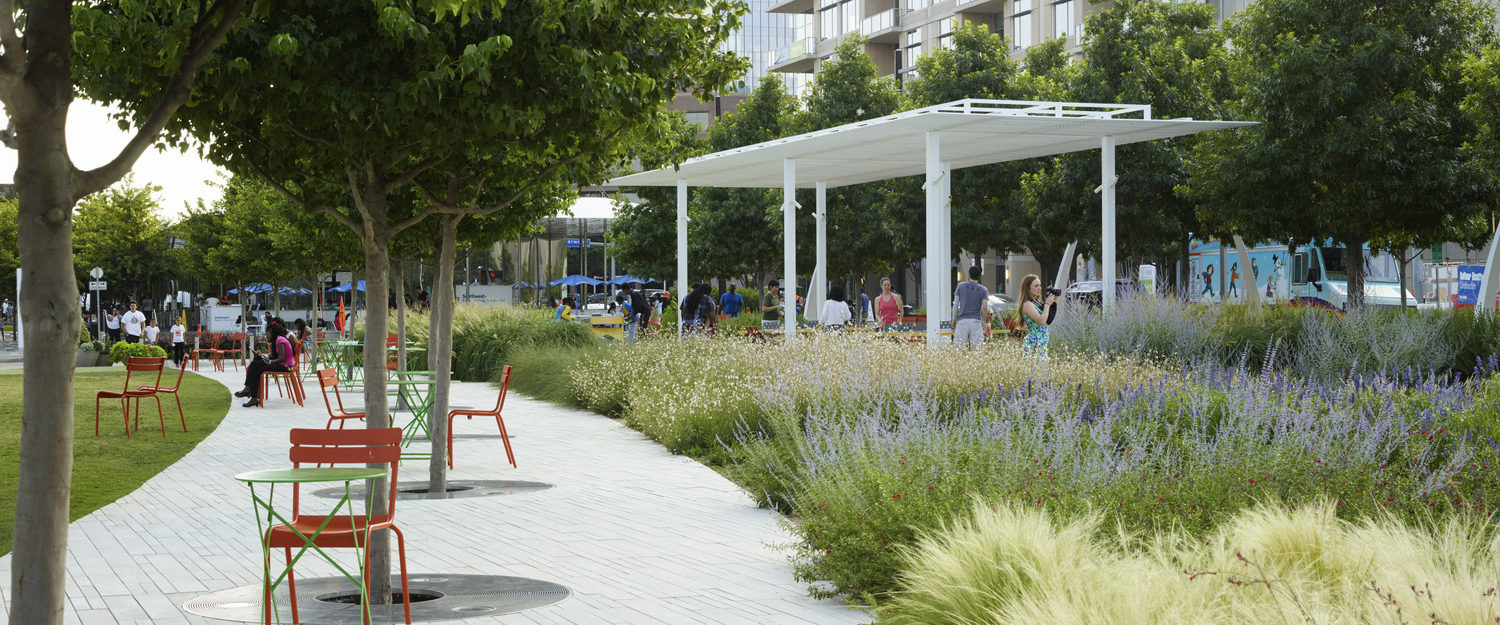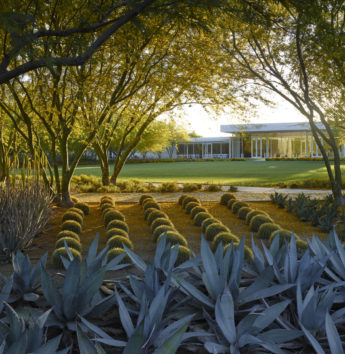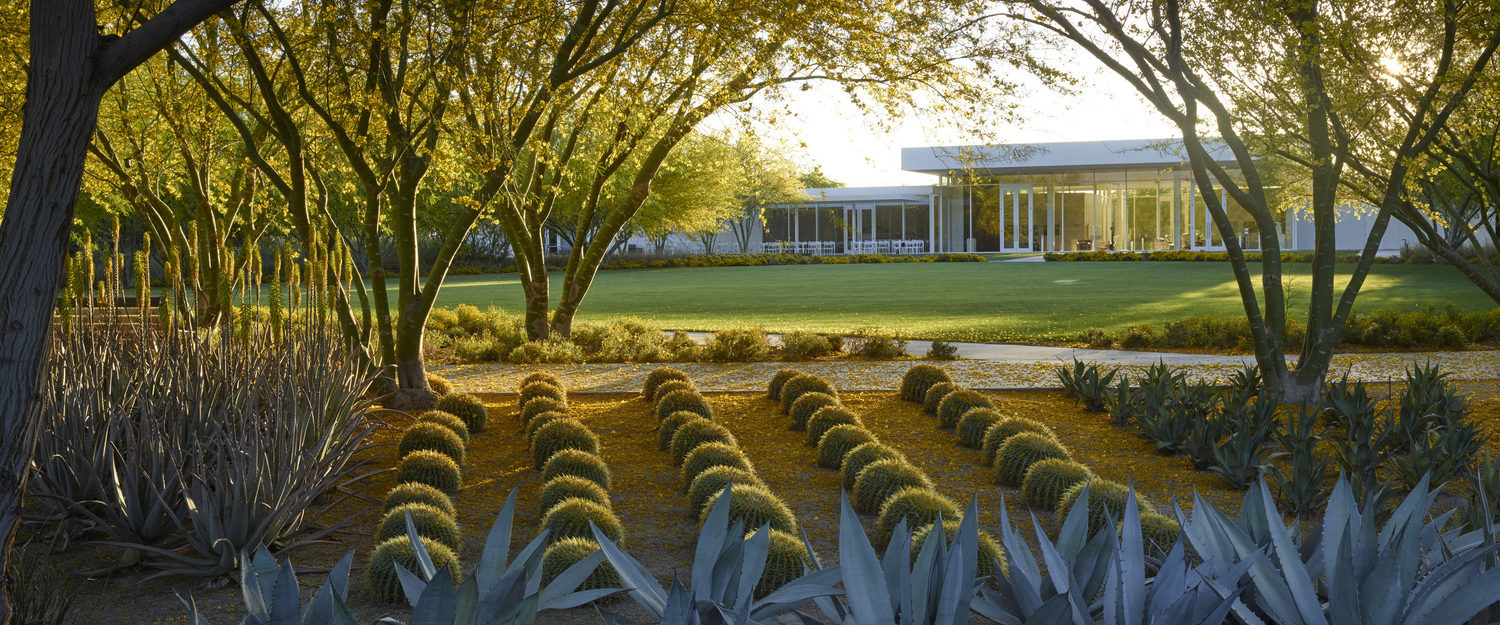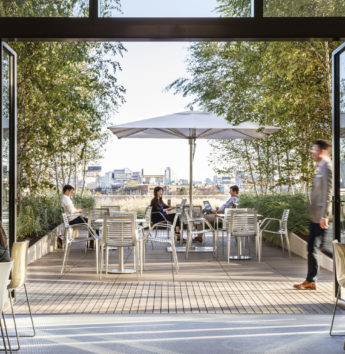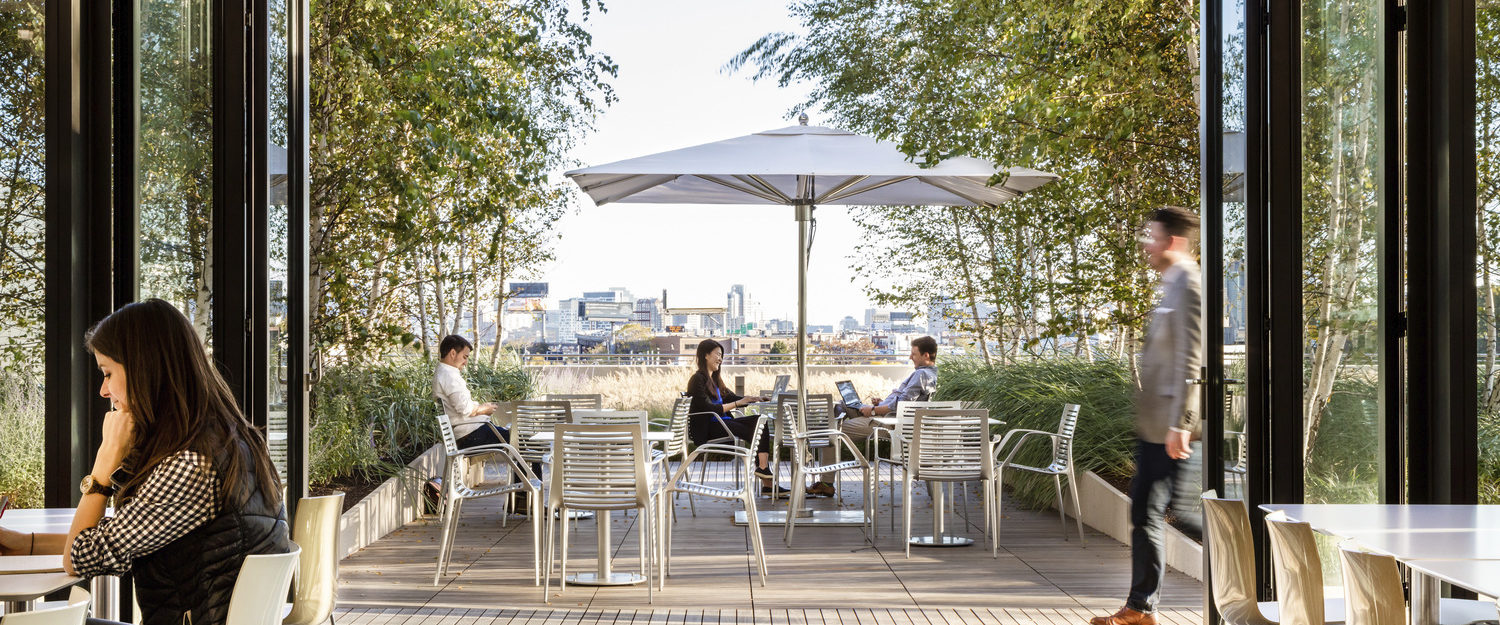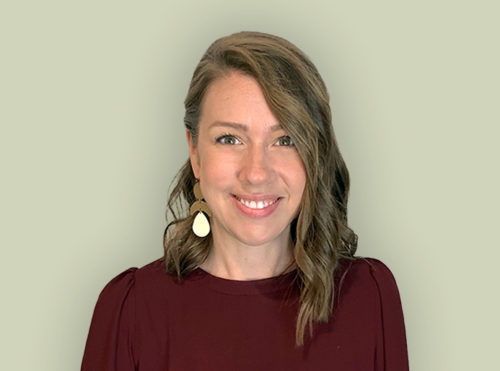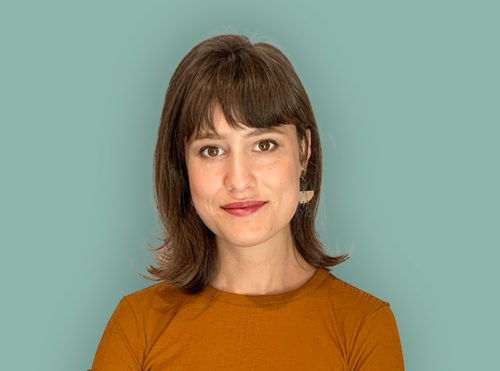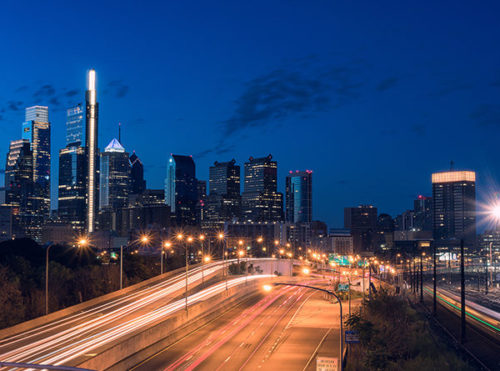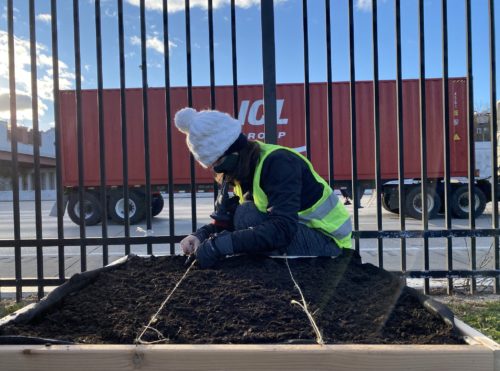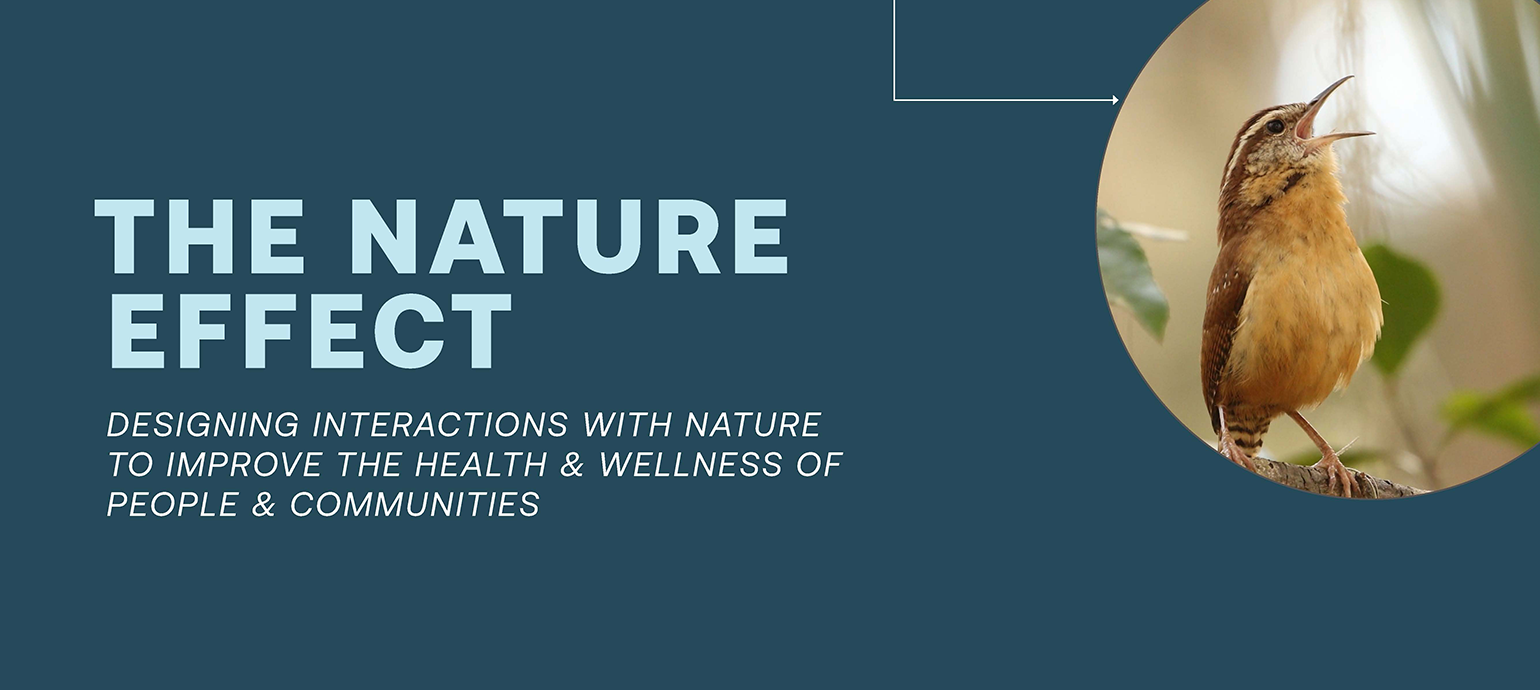

About the *lab
Everything we learn builds upon itself. We dig into the performance of our landscapes and subject them to a rigorous post-occupancy analysis. Every project advances our knowledge and helps us improve our next project.
We developed a list of metrics including infrastructure, environmental, social, cultural factors. We continue to analyze every project through these metrics and build on our knowledge and performance in successive projects. Measuring and documenting completed projects on how they have performed against their design intent has given us important benchmarks, as well as new design standards and improved targets. These findings and improvements are continually shaping and inspiring us to deliver responsive design.
*lab Partnership
Landscape architecture is a highly collaborative endeavor and cross-pollination of industries is essential to tackling our most complex environmental, cultural, and community health challenges. A superpower of landscape is its ability to relate to every person and industry. The OJB*lab team utilizes the diverse voices and expertise of landscape partnerships to drive inventive, responsive and sustainable solutions. The team’s work is a collaborative endeavor with universities, local and federal government agencies, community advocacy groups, non-profits, developers, and practicing professionals.
Wellness is a core value of OJB*lab’s research work, utilizing evidence-based design to employ nature-based strategies to improve human and environmental health. Current research work includes a grant-funded study of the effects of air pollution on public open space adjacent to highways, with the aim of creating safer and more healthful design interventions. The research methodology pairs field measurements with engagement of an interdisciplinary advisory group. The project collaborates with professionals from the City of Philadelphia, the EPA, Delaware River Waterfront Corporation, the McHarg Center, and University practitioners. Findings are anticipated to be published in 2022.
*lab Project Scoring
Klyde Warren Park
- PLANTING
- WATER
- SOCIAL
- SOCIAL
0%
of planting is native to North Texas
0 gal
of greywater can be collected in the reservoir for irrigation
0
actively programmed spaces
0+
visitors came to the park within its first two years of opening
PLANTING
0%
of planting is native to North Texas
WATER
0 gal
of greywater can be collected in the reservoir for irrigation
SOCIAL
0
actively programmed spaces
SOCIAL
0+
visitors came to the park within its first two years of opening
Sunnylands Center & Gardens
- PLANTING
- WATER
- CARBON, ENERGY + AIR
- CARBON, ENERGY + AIR
0
arid landscape plants were used, including 70 different plant and tree species
0%
of allocated Coachella Valley Water District water utilized; 100% on-site stormwater retention
0
geothermal wells 396 feet below the Great Lawn heat and cool the Center
0 lbs
of annual carbon sequestration from the 617 new site trees, which offsets 8.9 cars per year
PLANTING
0
arid landscape plants were used, including 70 different plant and tree species
WATER
0%
of allocated Coachella Valley Water District water utilized; 100% on-site stormwater retention
CARBON, ENERGY + AIR
0
geothermal wells 396 feet below the Great Lawn heat and cool the Center
CARBON, ENERGY + AIR
0 lbs
of annual carbon sequestration from the 617 new site trees, which offsets 8.9 cars per year
Mass General Brigham Administrative Campus
- PLANTING
- WATER
- CARBON, ENERGY + AIR
- SOCIAL
0
new trees planted on site
0 acres
of permeable surface was created
0 lbs
of annual carbon sequestration from new trees, offsetting 396 cars per year
0
employees were relocated to the site, activating the surrounding area/economy
PLANTING
0
new trees planted on site
WATER
0 acres
of permeable surface was created
CARBON, ENERGY + AIR
0 lbs
of annual carbon sequestration from new trees, offsetting 396 cars per year
SOCIAL
0
employees were relocated to the site, activating the surrounding area/economy
*lab Team
Allison Harvey, ASLA, PLA
PrincipalRosa Zedek
Project DesignerMrinalini Verma
AssociateSydnie Zhang
Lab Design SpecialistUpdates From the *lab
